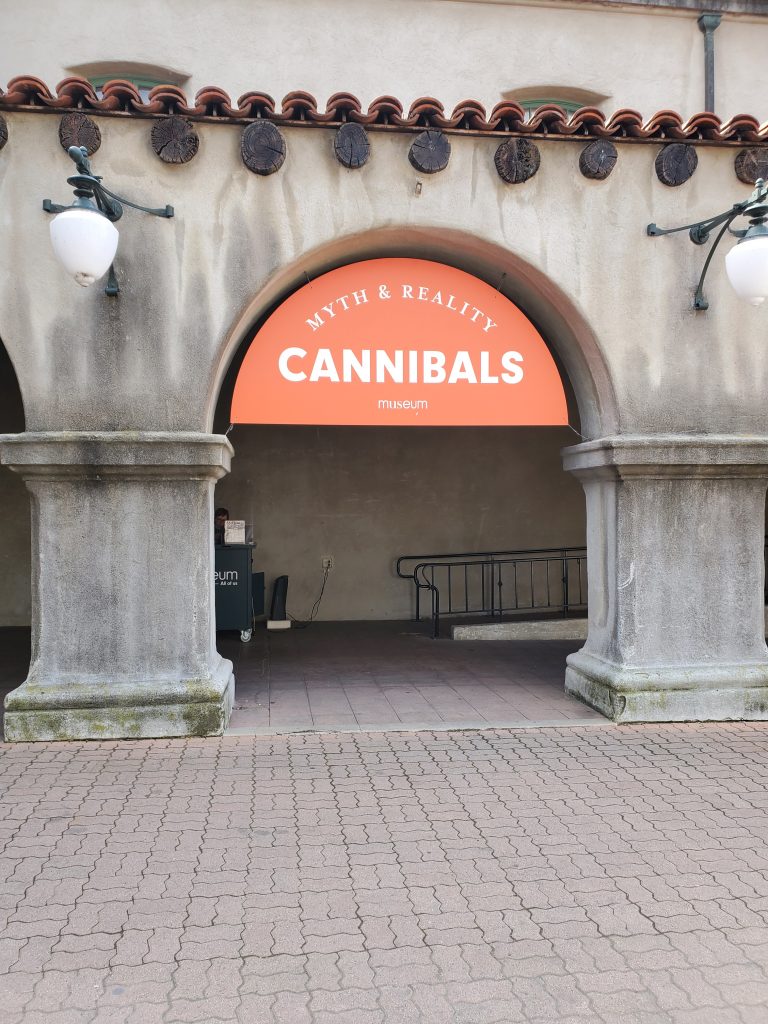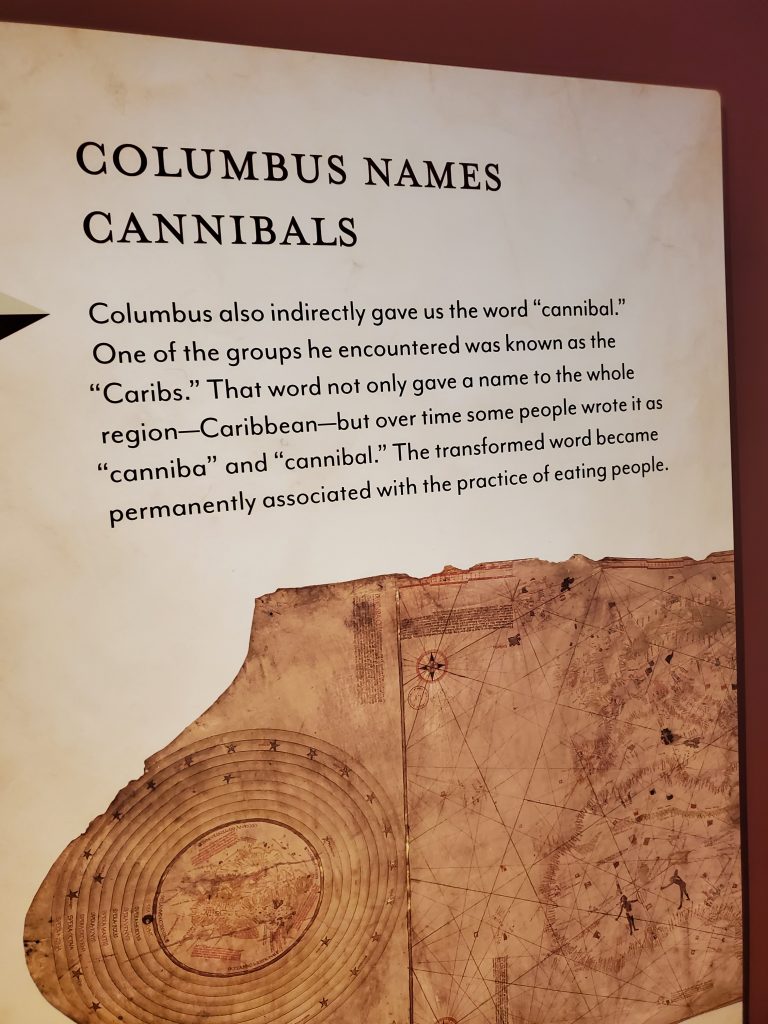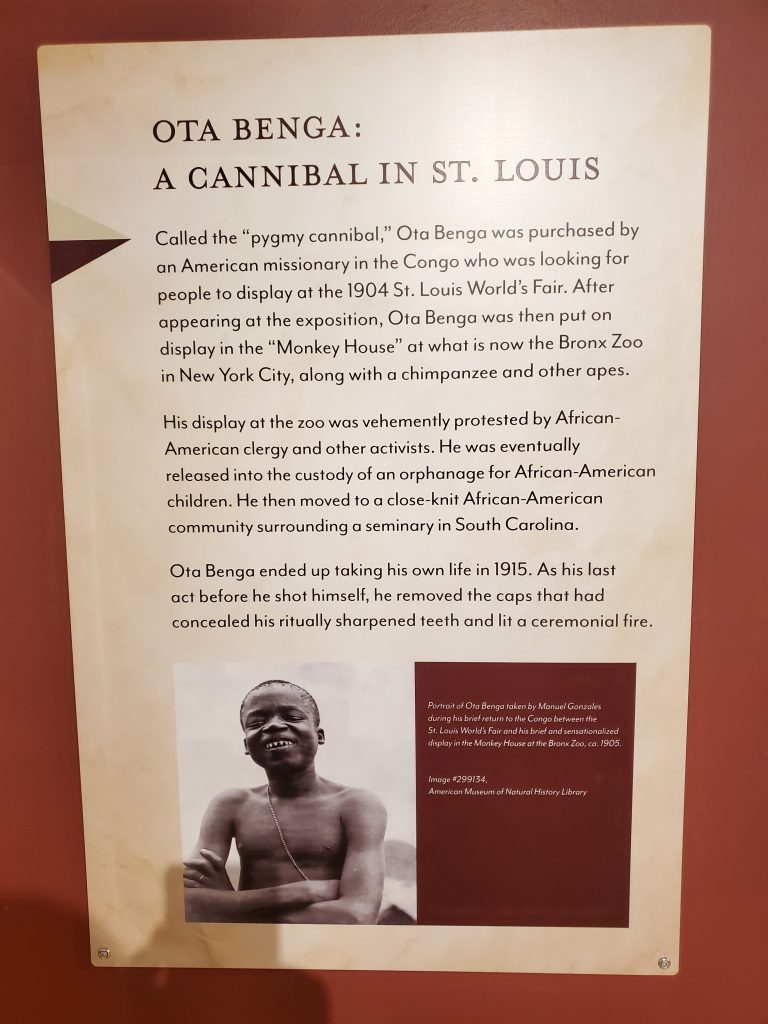An exhibit about the myths and realities of cannibalism at the San Diego Museum of Us in Balboa Park

This is my Taphophile’s report about the Cannibals exhibit at the San Diego Museum of Us. It is a “gore free” review of how the term “Cannibal” came to exist, and recent examples of Cannibalism.
The first hallway reminds us how often books, TV, and movies use Cannibalism as a theme. It may not be the main topic, but some popular stories include humans eating the flesh of other humans: “World War Z” “American Psycho” “Fried Green Tomatoes” “The Silence of the Lambs” “Sweeney Todd” and “Robinson Crusoe” among others.
“The Travels of Marco Polo”
Marco Polo became famous from a book that author Rustichello da Pisa wrote about his adventures. Polo grew up in Venice, Italy, and traveled extensively in Asia as a merchant. His stories about his experiences in Asia included observing cannibalism for different reasons. Although da Pisa was known for embellishing stories in his books to get more readers, many of Polos’ accounts of cannibalism were verified years later. While Polo talked about humans eating flesh, he does not get credit for the term “cannibalism.”
Christopher Columbus and “Cannibals”
Columbus read “The Travels of Marco Polo” and wanted to see these exotic lands. He convinced the King and Queen of Spain to sponsor his expedition in 1492 to find a route to Asia. Instead of Asia, he “found” land occupied by a group known as the Caribs. That led to describing the area we now know as the Caribbean. Once word got out about the Caribs, other European authors abbreviated the word to Caniba and then to Cannibal. The association of cannibal and consuming human flesh became permanent.

When Columbus updated the King and Queen on his experiences, he talked about cannibals, Amazons, and men with tails. Queen Isabella decreed that cannibals should be enslaved while the other residents of the Caribbean would be protected by Spain. The goal of enslavement was to “tame” those labelled cannibals, and to use them as cheap labor to mine gold and silver for Spain.
You might be a Cannibal if you lived in Jamestown Colony…
At one of the first English settlements in North America, the winter of 1609-1610 was very cold, with very little food. Attempts to grow crops during the previous summer were limited, so food ran out quickly. Archeology teams conducting research digs at the site in 2012 found human bones in what they think was a trash pit. The jaw and skull are likely to be a young woman with tool marks consistent with butchering techniques to remove the muscle for eating.
The sad story of Ota Benga
As organizers prepared for the 1904 Saint Louis World’s Fair, a missionary helped to look for “cannibals” to display. He met and bought Ota Benga in the Congo. He was nicknamed the Pygmy Cannibal because of his small stature and culture. When the World Fair finished, Benga returned home briefly before going on display with actual apes in the “Monkey House” in what is now the Bronx Zoo in New York City. His ownership and display got the attention of clergy and other activists. They protested and eventually won his release. He moved into an orphanage for African-American children before relocating to a supportive community in South Carolina.
Unfortunately, in 1915 he took his own life after removing the caps concealing his sharpened teeth, a cultural practice in the Congo.

Cannibalism among ship crews
The photo below shows just one example in the museum display of cannibalism after a catastrophic event at sea.

Are you a cannibal to survive, or a cannibal getting revenge?
The video below shows how bodies that were cannibalized can indicate to researchers why they were eaten by other humans:
I hope my blog has sparked your interest in this exhibit! There are, of course, more displays on how and why cannibalism has occurred around the world. With international travel, it is still possible that cannibalism for survival will occur again.
Cannibals: Myth & Reality – Museum of Us
About the author – Cultures and Graves
Leave a Reply